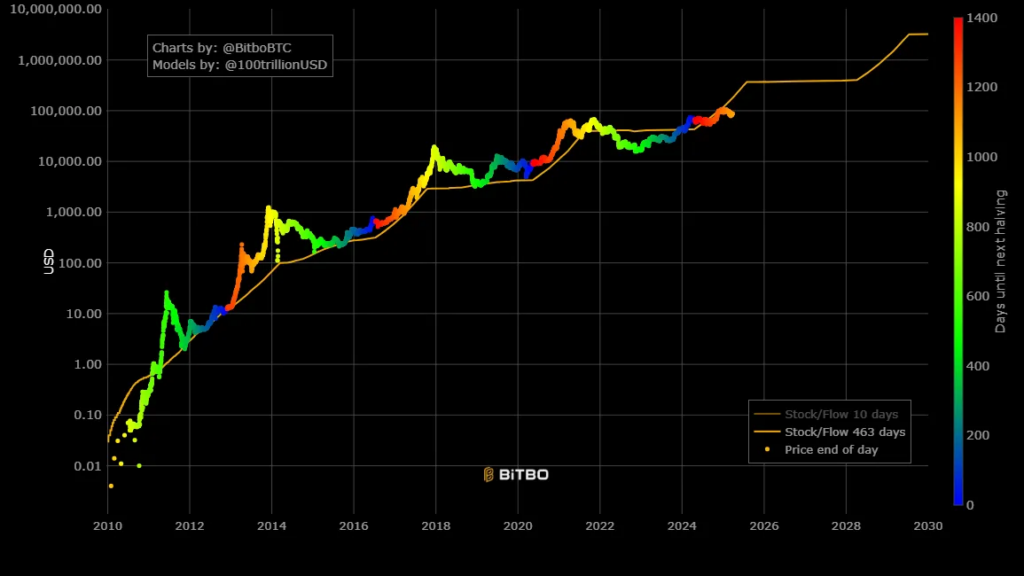Introduction
Bitcoin is once again at the center of financial discussions, following a striking prediction by BlackRock CEO Larry Fink that the cryptocurrency could reach $700,000. This forecast has ignited debates among investors, analysts, and crypto enthusiasts. But is this ambitious target grounded in reality, or is it an overly optimistic projection? This article examines the factors influencing this claim, historical price trends, and Bitcoin’s potential trajectory.
Fink’s Prediction: Bitcoin’s Path to $700,000
Larry Fink, the head of BlackRock—the world’s largest asset management firm—suggests that Bitcoin could reach $700,000 if institutional investors, including sovereign wealth funds, allocate even a small percentage of their portfolios to the cryptocurrency. Several key factors support his argument:
- Growing Institutional Adoption – Increasing participation from hedge funds, banks, and asset managers is reinforcing Bitcoin’s legitimacy as an investment asset.
- Bitcoin’s Scarcity – With a capped supply of 21 million coins, Bitcoin is considered a hedge against inflation, particularly as global currencies face devaluation.
- The Rise of Bitcoin ETFs – Financial giants like BlackRock, Fidelity, and Grayscale have introduced Bitcoin ETFs, improving accessibility for mainstream investors.
These factors suggest Bitcoin could achieve new record highs, but how realistic is a $700,000 valuation?
Key Factors Driving Bitcoin’s Potential Price Surge
1. Rising Institutional Demand
One of the primary catalysts for Bitcoin’s price appreciation is the increasing involvement of institutional investors. BlackRock’s Bitcoin ETF, alongside offerings from Fidelity and Ark Invest, has already attracted billions in inflows. As more financial institutions integrate Bitcoin into their portfolios, demand could continue to climb, driving prices higher.
2. Fixed Supply and Scarcity Effect
Unlike fiat currencies that can be endlessly printed, Bitcoin has a strict supply cap of 21 million coins. This scarcity drives value, similar to precious metals like gold. As demand rises and supply remains fixed, Bitcoin’s price could experience significant upward pressure.
3. Bitcoin Halving and Supply Shock
Bitcoin’s most recent halving in 2024 reduced mining rewards, limiting the number of new Bitcoins entering circulation. Historically, halvings have preceded major bull runs, as reduced supply leads to increased demand. If historical patterns hold, this halving could set the stage for another Bitcoin rally.
4. Economic Uncertainty and Safe-Haven Appeal
With inflation concerns, geopolitical tensions, and instability in traditional banking systems, Bitcoin is increasingly viewed as “digital gold.” As a decentralized asset, it offers investors an alternative to traditional financial markets, further strengthening its appeal.
5. Expanding Global Adoption
Governments, corporations, and financial institutions are gradually embracing Bitcoin. Countries like El Salvador have made it legal tender, and major payment processors are integrating Bitcoin transactions, enhancing its mainstream adoption.
Challenges to Bitcoin Reaching $700,000
While Bitcoin’s future appears promising, several obstacles could prevent it from reaching such an ambitious price target:
Competition from Other Cryptocurrencies – Rivals like Ethereum and Solana offer technological advancements that could divert demand from Bitcoin.
Regulatory Uncertainty – Governments worldwide continue to debate how to regulate Bitcoin, with potential policy changes that could impact its adoption and growth.
Market Volatility – Bitcoin’s history of extreme price fluctuations may deter cautious investors from making long-term commitments.
Expert Opinions: Can Bitcoin Really Hit $700,000?
While Fink’s prediction is ambitious, many experts agree that Bitcoin’s price could see significant increases in the coming years:

Bitcoin Stock to Flow model chart, From: BiTBO
- PlanB’s Stock-to-Flow model suggests a possible range of $500,000 in the long term, depending on how well Bitcoin follows historical price cycles.
- Standard Chartered predicts Bitcoin could reach $200,000 by 2025 due to institutional adoption. This projection is based on the assumption that Bitcoin’s role as a financial asset will continue to grow.
- Bloomberg analysts believe Bitcoin could reach $150,000 in the next few years but are more cautious about higher targets. According to their analysis, Bitcoin’s growth will depend on regulatory developments and macroeconomic conditions.
While forecasts differ, there is a consensus that Bitcoin’s value will likely appreciate over time, albeit with notable volatility.
Conclusion: Is $700,000 a Realistic Target?
Larry Fink’s projection of Bitcoin reaching $700,000 is ambitious but not impossible. For Bitcoin to achieve this milestone, it would require substantial institutional investment, favorable regulatory developments, and ongoing global economic instability. While the potential upside is significant, investors should approach such predictions with caution.
Regardless of whether Bitcoin hits $700,000, its role in reshaping the financial landscape is undeniable. As adoption continues to grow, its impact on global finance will remain a key topic for discussion. Investors should stay informed, track market trends, and conduct thorough research before making any investment decisions.
Disclaimer: This article is for informational purposes only and does not constitute financial advice. Cryptocurrency investments carry risks, and readers should conduct their own research before making any financial decisions.s a critical topic of discussion.




